The Android smartphone market is full of phones which look-alike, offer the same features and don’t really offer anything over the competition. It’s understandable as it takes guts to do something out of the ordinary, it’s a big risk, one which has paid off well for the Oppo N1!
Oppo N1 Review - Like nothing else!
I will be honest, when I fist saw the Oppo N1 during the launch I honestly thought it was the largest, most odd-looking smartphone I had ever seen, and to top it off it had lower than expected hardware and a gimmick swivel camera. Then I bought one, and have enjoyed it since the day I unpacked it!
Oppo N1 Review - Specifications
[komper pid=117 compareform=no]
Oppo N1 Review - Design
Rather than sticking to a tried and trusted formula (Oppo could have simply made a larger version of the Find 5) Oppo went for a whole new design for the Oppo N1, it was a big gamble for them and it has mostly paid off.
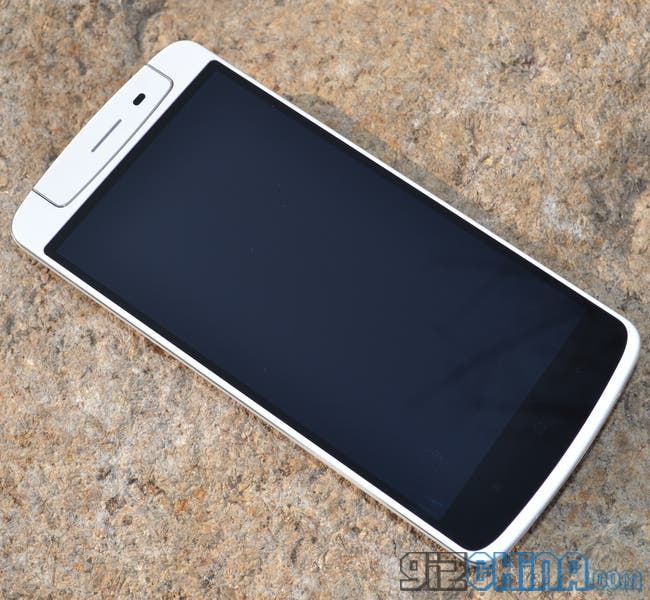
Looking at the phone from the front, the first thing that strikes you is the length of the Oppo N1. No matter how partial you are to a large screen Android phone there is no denying that the N1 is longer than most, especially considering it has a screen size of ‘just’ 5.9-inch.
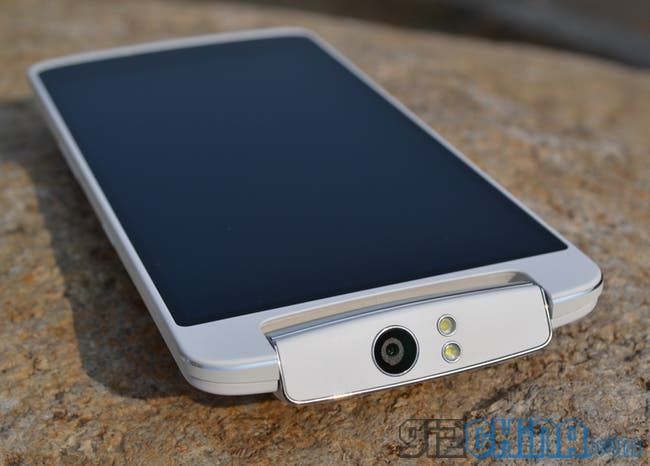
Measurements of the N1 are 170.7 x 82.6 x 9mm, in comparison the Samsung Galaxy Note 3 measures in at 151.2 x 79.2 x 8.3mm. Of course the Note 3 has a slightly smaller 5.7-inch display, but the real reason for the extra girth on the N1 is to create a solid platform for the large display and rotating camera. Oppo could have gone for a much more compact design, but then could have risked failures, flexing, warranty issues and this would tarnish the brand image they have worked so hard to create.
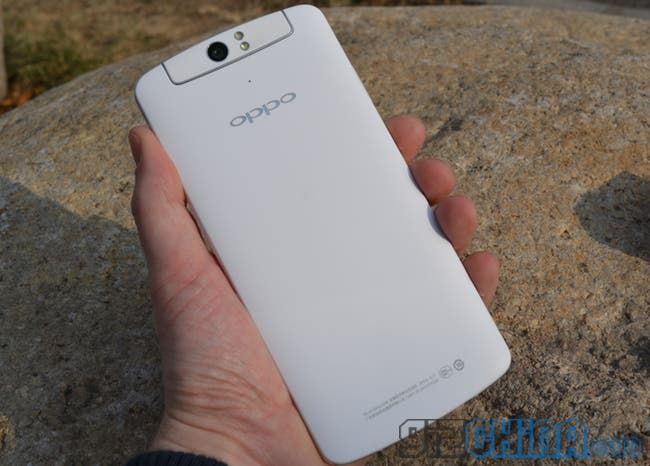
The Oppo N1 is a premium feeling phone, if you can forgive the slightly loose power button and volume rocker. Manufactured from a high quality polycarbonate which almost feels like metal on a cool day. The large body is creak and flex free and feels reassuringly solid in your hand, if a little top-heavy.
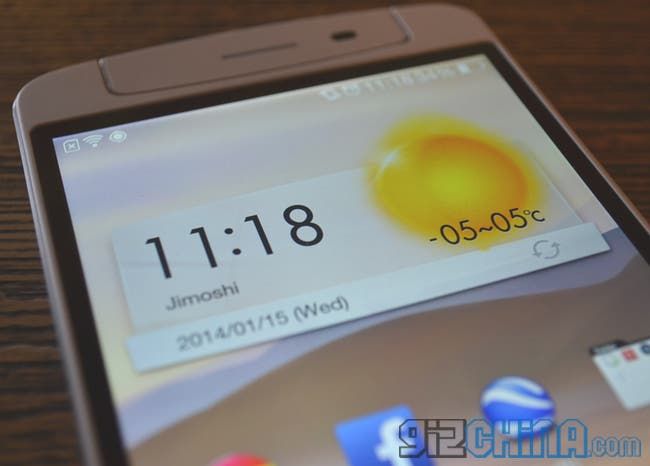
If you look at the front a large black glass area takes up the majority of the face and gives the impression of super narrow bezels, this isn’t the case though as the 5.9-inch display has a large black border around it.
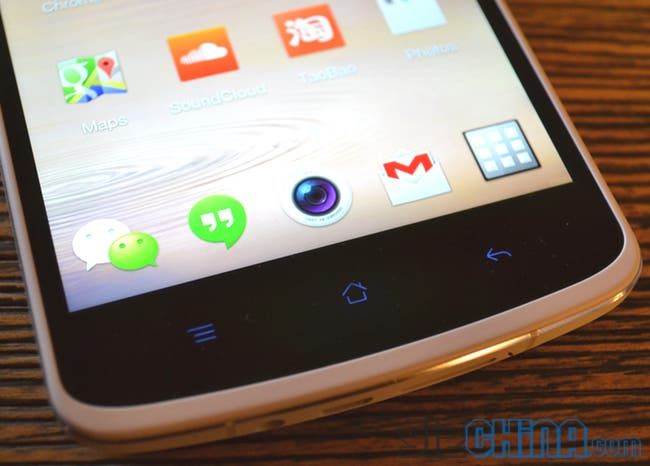
The chin of the N1 appears to be larger than is necessarily needed and seems to have been designed to match the top for aesthetic reasons rather than need for necessity. The chin is also where we find back-lit capacitive buttons in the usual Android configuration (option, home, back). With all the space below the screen it is a shame the capacitive buttons feel cramped and too close together.
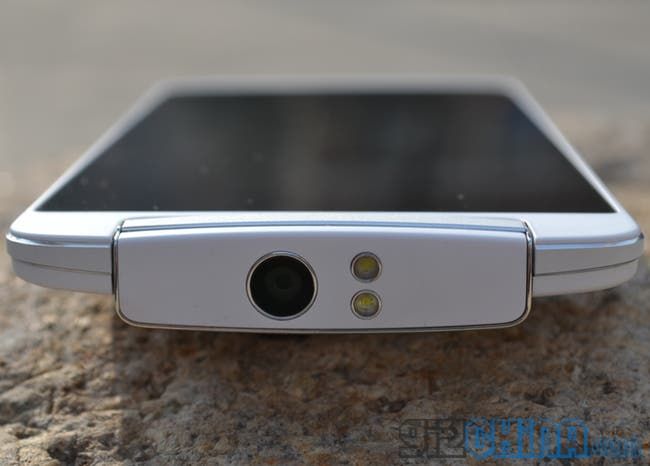
The top of the N1 is where all the ‘magic’happens. A near rectangular area at the top of the phone with silver surround is where you will find the rotating camera panel. In its default position (with the camera on the rear) a speaker and proximity sensor face forward, but rotating the panel brings the 13 mega-pixel camera and dual-LED flash to a front. The camera/LED combo can be rotated through 206 degrees and set at any position between 0 and 206, plenty of scope for adjustment!
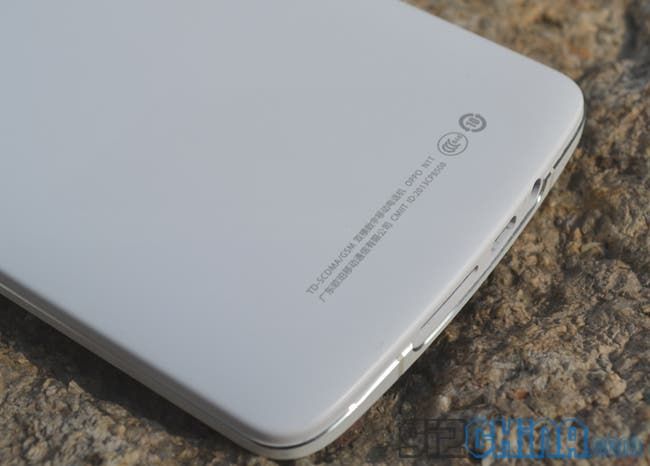
To the rear we are greeted with a large clean expanse of white material with a silver Oppo logo and a few words designating which model phone you have.
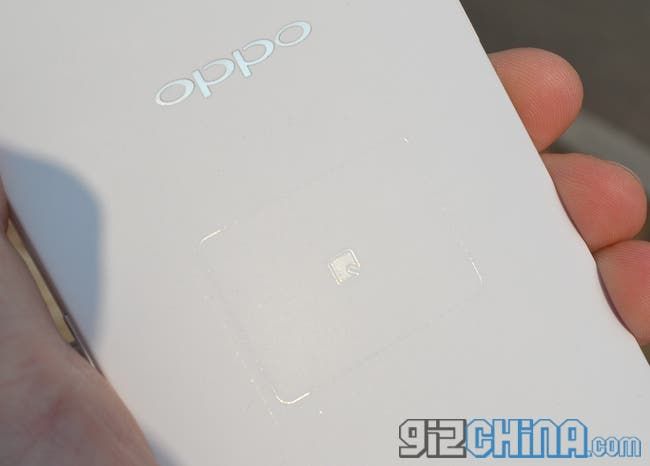
If you take a closer look mid-way down the rear of the N1 you will just be able to make out a rectangle patch. This is the Oppo O-Touch panel, a rear mounted touch sensor which can be used to take photos, open specified apps and scroll through menus, webpages and emails.
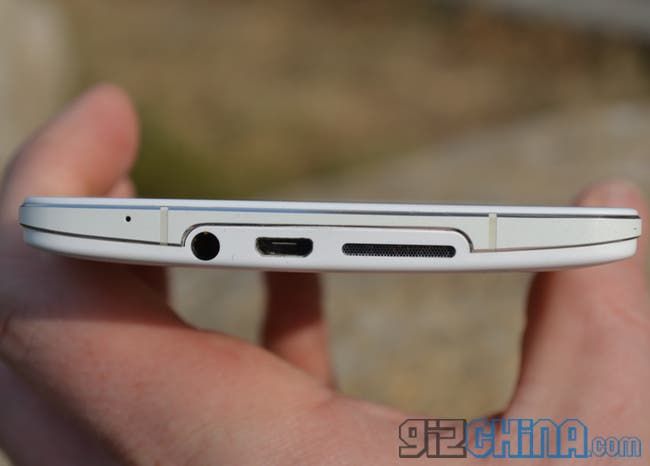
The only places left to explore now are the sides of the phone. A micro SIM tray is located on the left, power and volume rocker on the right and a 3.5mm headphone jack, micro USB and external speaker in the base.
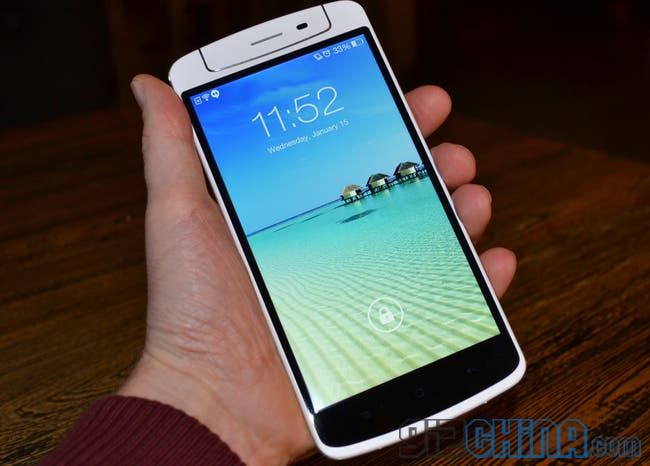
As you can see from the photos the Oppo N1 is a large phone in my hand and even those with larger hands than myself have commented on the size of the phone. One handed operation is possible but you have to be extremely careful as a slightly top-heavy design can catch you off guard now and then. At such a large size it’s strange than Oppo haven’t implemented a one-handed mode in their ColorOS ROM (a glaring over site in my opinion).
Oppo N1 Screen
The display on the Oppo N1 is a 5.9-inch panel with a FHD resolution of 1920 x 1080 and Gorilla Glass 3 to protect against knocks and scrapes. At 5.9-inch the 1080 panel has a pixel density of 377ppi, and IPS giving great all round viewing angles.
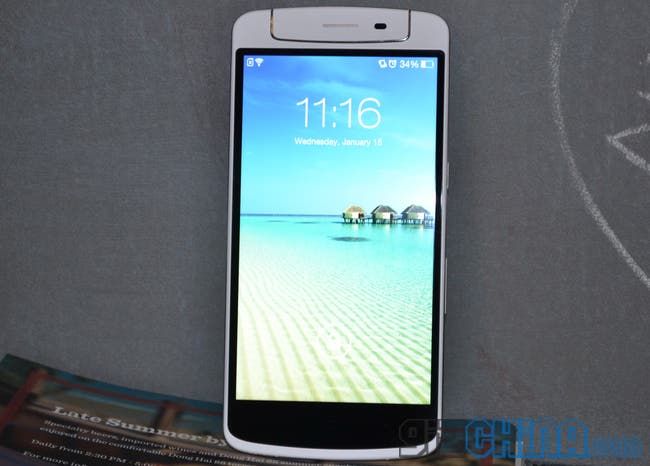
Most of the time I use the Oppo N1 on it’s lowest brightness setting. This is perfect for me for indoor and night use and also helps to save some battery power. When outside though you will need to turn the brightness up to at least halfway, more if it is a particularly sunny day.
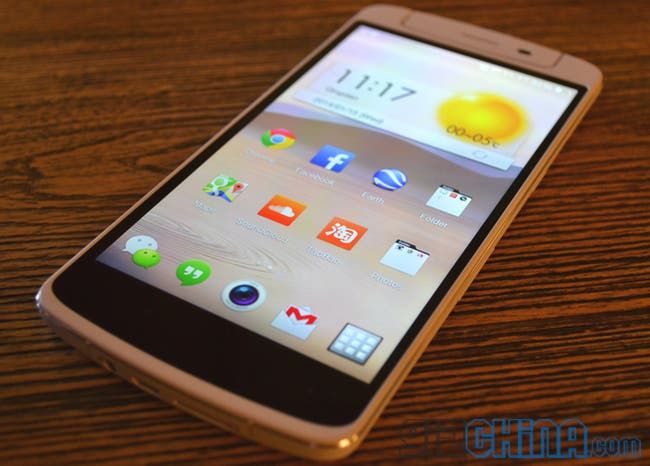
The multi-touch, capacitive panel is responsive, vibrant and reproduces colours very well, although black backgrounds aren’t quite as dark as they are on other devices, but this is hardly a major issue.
Oppo N1 Performance
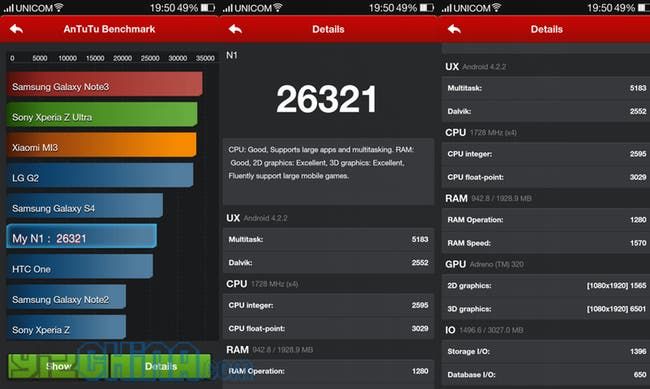
A lot of people were disappointed with the processor hardware on the Oppo N1 when it launched, but pure grunt isn’t what this camera centric phone is all about. In reality the 1.7Ghz Snapdragon 600 quad-core processor, Adreno 320 GPU and 2GB RAM is more than enough to run all your daily apps, games and mostly anything else you would want to do with a phone.
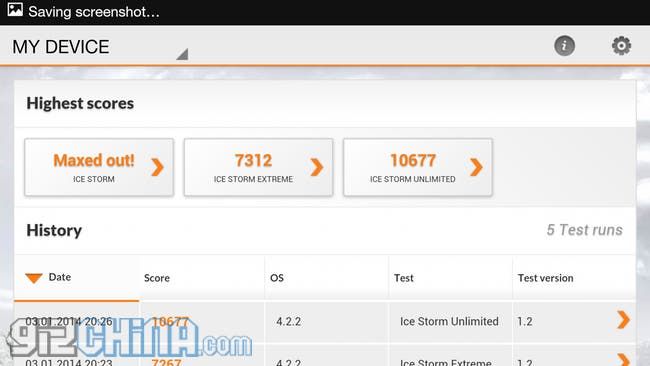
It’s no surprise that with this setup the Oppo N1 scores well on all the benchmarks , and in real world usage the big Oppo runs everything we throw at it perfectly fine on a daily basis.
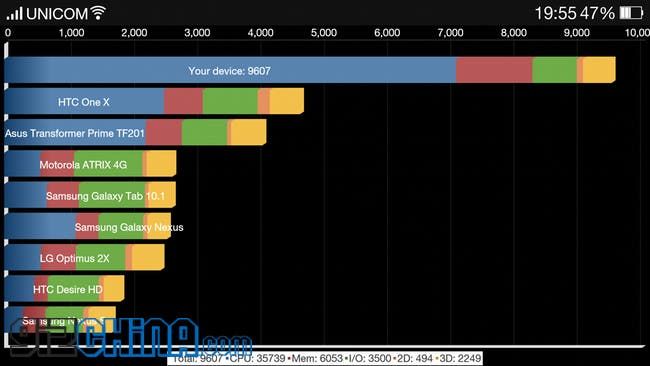
The results we managed to get during the review are as follows:
- Antutu: 26,321
- Quadrant: 9607
- Nenamark: 61.0fps
- 3D Mark Ice Storm: Maxed Out
- 3D Mark Ice Strom Extreme: 7312
- 3D Mark Ice Storm Unlimited: 10677
Oppo N1 Camera
The Oppo N1 is unique in that it is the only high-end, premium smartphone on the market with a single rotating camera. As already mentioned the rotating camera platform can rotate 206 degrees and features a 13 mega-pixel sensor and dual LED flash.
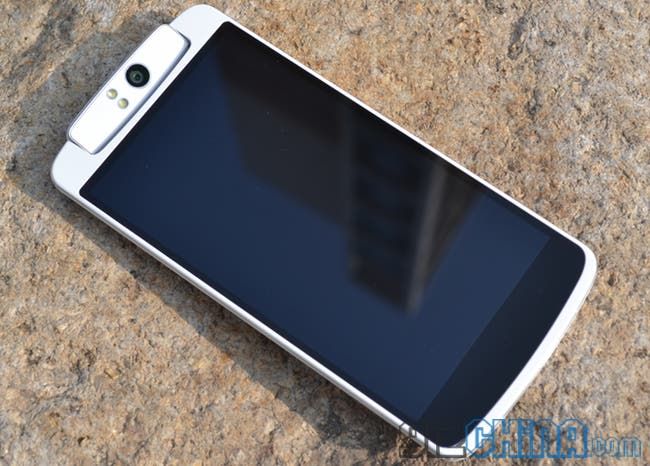
A dedicated ISP (an image processing engine) works with the 13 megapixel CMOS sensor, F2.0 aperture and 6 physical lenses to offer some serious exciting image capturing capabilities. The camera hardware along with the versatility of the rotating camera pod really give you lots to play with and you will soon find yourself taking photos in new and interesting ways.
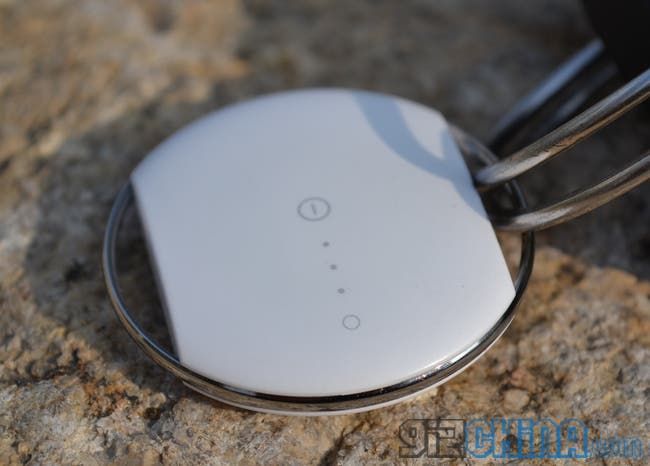
It’s not just the phones hardware, but the included O-click Bluetooth remote offers another degree of flexibility to the Oppo N1, allowing you to lay your phone on a flat surface, tilt the camera to face your subject stand back and click away.
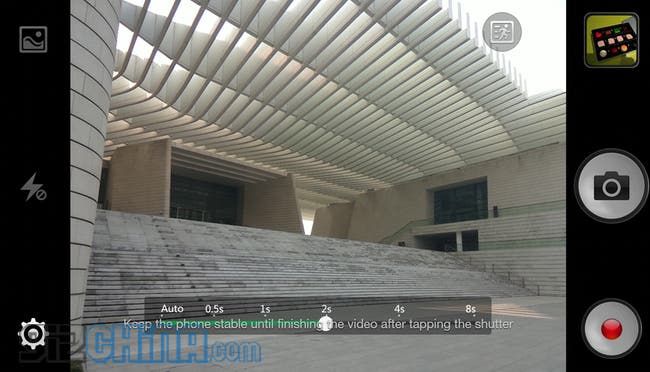
The O-click also comes in handy when wanting to take long exposure photos, and believe me you will be using this function more than you would every have imagined. The N1 is capable of up to 8 second long exposure photos, perfect for extremely low-light photos, or capturing light streaks from passing cars at night. The exposure can be set at Auto, 0.5, 1, 2, 4 and 8 seconds. I have often thought 6 second option would be worth having for some situations, or just to play around with the light, perhaps we will get this in a future OS update.
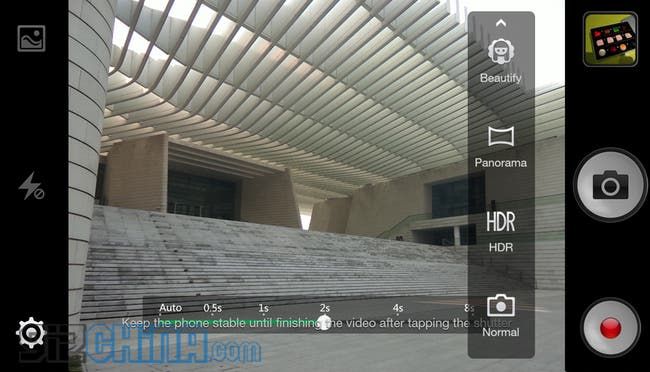
The slow shutter is just one of the options available when taking photos, there are also ‘normal’mode, ‘HDR’, ‘Panorama’ and ‘Beautify’. Rotating the camera around to face the front the Oppo N1 automatically rotates the screen around and changes what settings are available to just ‘normal’ and ‘beautify’. This is kind of a shame and I would like to see Oppo add the slow exposure option to the front camera as you can get some pretty cool effects by keeping the camera locked on your face as you spin around or move.

Speaking of added features the camera app on the N1 has the all important beatification option which whitens your skin, and enlarges your eyes. The selfie modification doesn’t end there though as there are even options to add different make-up styles to your self portraits!
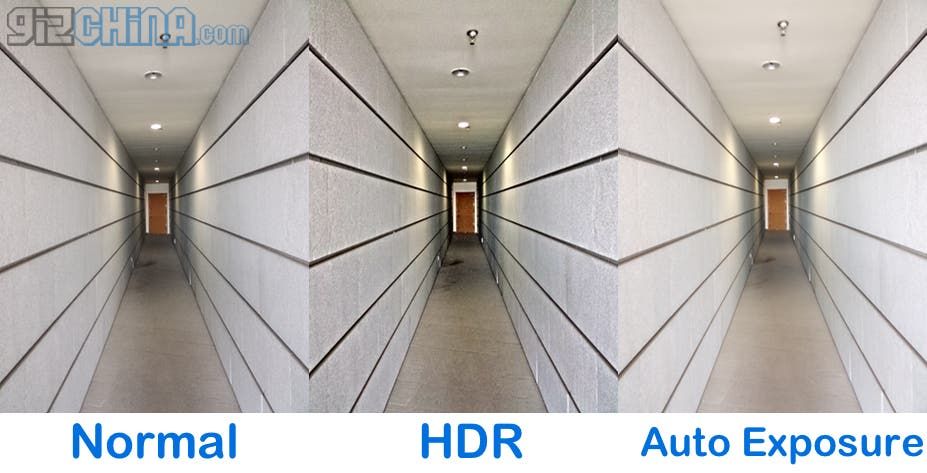
Although the N1 is a camera centric phone and it can take some rather nice photos and at great angles I feel there is need for some optimisation. Photos taken on normal mode in low light conditions are way more noisy than I expected from the N1. HDR is great in all but very sunny conditions and find the Xiaomi Mi2 HDR offers better sunny HDR images. I have found that in certain light conditions there are odd reflections in the photos. I have yet to discover if this is light reflecting off the metal ring around the lens or light bouncing around the lens itself, but it only affects some photos some of the time.

Another issues is when using the burst mode the aperture can sometimes stick open constantly letting light in and create a washed out or all white image. This could be fixed with an OS update though.
Oppo N1 Photo samples
Even with these issues the N1 is by far the best camera phone I have used. Not only is image quality excellent, but the versatility of the phone allows for some amazing shots.
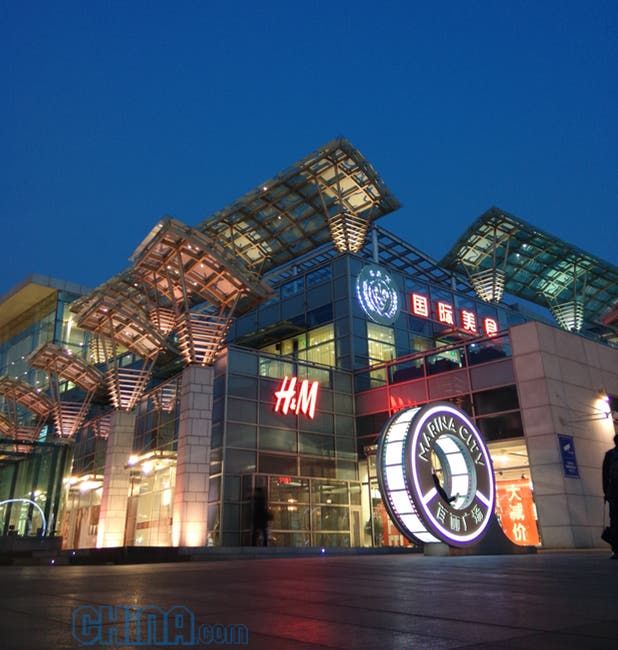
ColorOS
My version of the N1 is a China Mobile, (TD-SCDMA) and shipped with the Chinese version of ColorOS which lacks all the important Google apps and services. Fortunately I was able to download and easily install the international version of ColorOS which I can report runs very well indeed.
As far as transitions, animations and opening apps goes ColorOS is silky smooth and performs as well as you would hope it should.
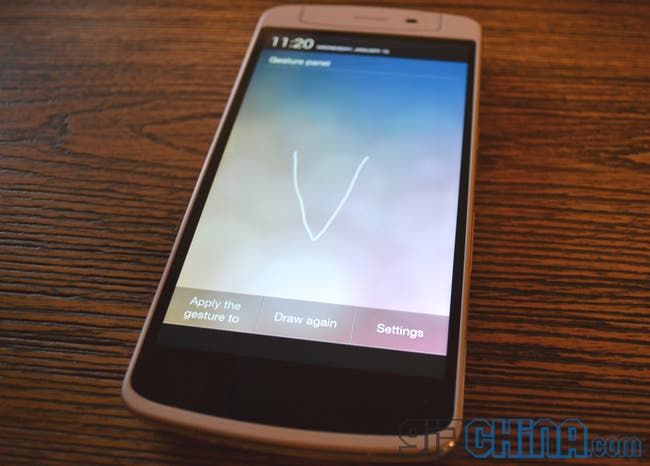
ColorOs is chock full of features including a number of gesture controls to activate the phone when it is locked. The default gestures are drawing a circle on the lock screen which activates the camera, or a V for the flash light. You can also customise your own gestures to open apps, call contacts and even open websites. As well as using these gestures on the lock screen you can also use them by simply pulling down from the top left hand side of the display (this can be switched to the right if you prefer).
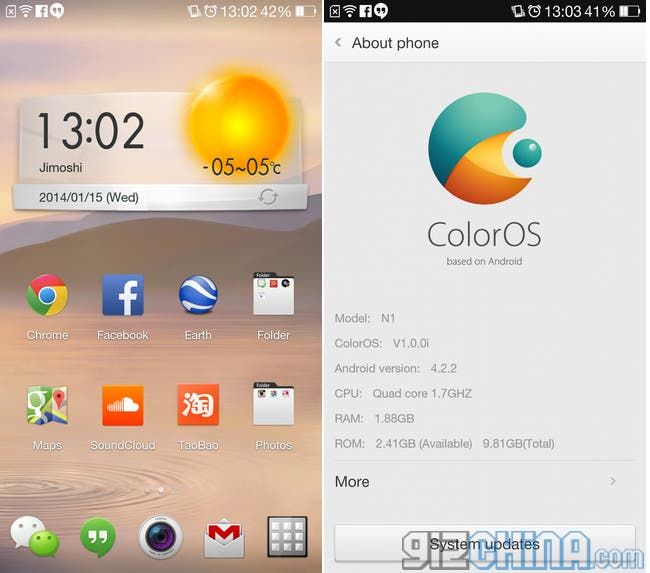
Other nice features I enjoy in ColorOs are the double tap to wake option, and mutli-finger gestures for taking a screenshot or adjusting volume.
It’s not all about gestures though. ColorOs also has some neat season/weather based animations which will give your phone a seasonal look depending on the time of the year.
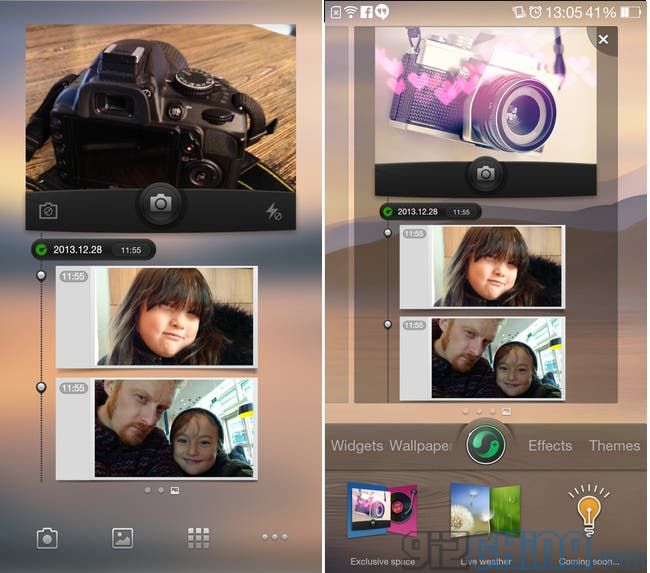
There are also special widgets named “exclusive spaces”. Out of the box there is an exclusive space already set up for the camera meaning you can take photos right from the home screen and even scroll through images on the time line. There is also a music space which mimics the look of an old record player (but unfortunately it won’t let you practice your virtual mixing skills).
ColorOs is a nice ROM but it’ isn’t without it’s quirks. I have had the camera app force close now and then, but the main issues seems to be with the notifications area getting jumbled after going from landscape to portrait mode.
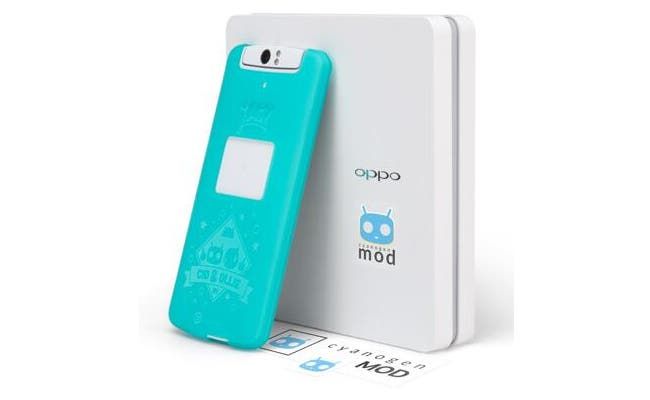
If you don’t like the look of ColorOS you can always install CyanogenMod on the N1 too which is fine for those wanting a more ‘Android like’ expericence, but I haven’t played around with CM much as the slow-exposure option is limited to just auto and this is what I use the most.
Even with the bugs I quite like ColorOs and I am confident the ROM will mature as Oppo updates it and fixes any bugs.
O features
The rotating camera isn’t the only unique feature to the N1, there is also the rear O-touch panel and the bluetooth O-click remote.
Both of these features look great and work really well, but in all honesty I have switched the rear panel off due to a few miss clicks and it interfering when using the phone now and then, and the O-click I use only for group photos, but a timer is just as useful.
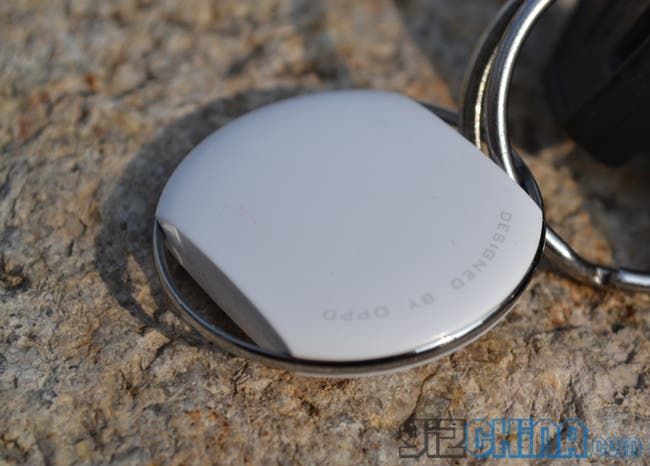
The O-click can also be used to find your phone, simply double-click the O-click and your phone will begin to ring. You can also set up a proximity alert which will have the O-click beep when you move away from your N1 preventing you from leaving the phone behind.
If you were to loose you O-click then Oppo have that covered too as the N1 can also activate the beep on the small remote. Very handy if you have it clipped to your keychain.
Oppo N1 Battery
Love or hate the looks of the large N1, but there is no denying the usefulness of such a large phone when wanting to employ a large battery. Oppo have gone for a monster battery in the N1 with the 5.9-inch phone receiving a 3610mAh built-in unit! That’s bigger than batteries in phones of a larger size and many of the cheaper Chinese tablets!
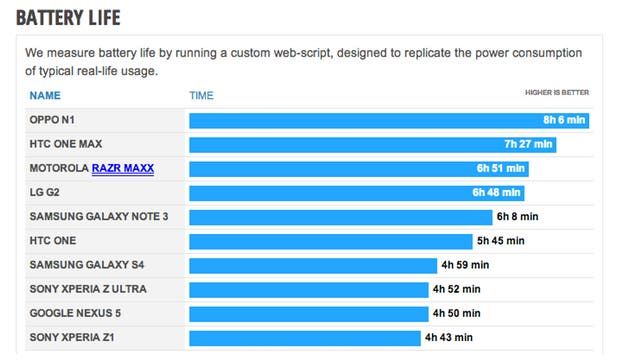
It is no surprise then that the N1 has amazing battery life! In our tests I could easily last the whole day and more on a single charge with email, browsing and heavy camera use! If you wanted a second opinion on battery life for the N1 you could also take a look at PhoneArean’s test which have the N1 as the current champion of battery life consumption at 8 hours and 6 minutes! In comparison the LG G2 can’t even get to 7 hours!
Oppo N1 Conclusion - One of the most fun phones we have tested!
Different phone users have different priorities when it comes to choosing a new phone. Some demand the highest specs, others amazing battery life, open source is a top contender, and a great camera is always popular, but for me the main deciding factor is how I feel when using a device!
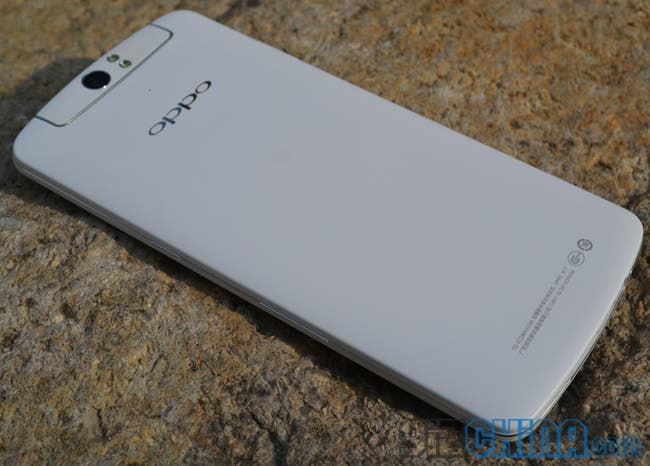
The Oppo N1 is a fun phone! It is actually so much fun that I couldn’t wait for the WCDMA model and jumped ahead with the TD-SCDMA meaning terrible China Mobile 3G, but I still find it so much fun to use!
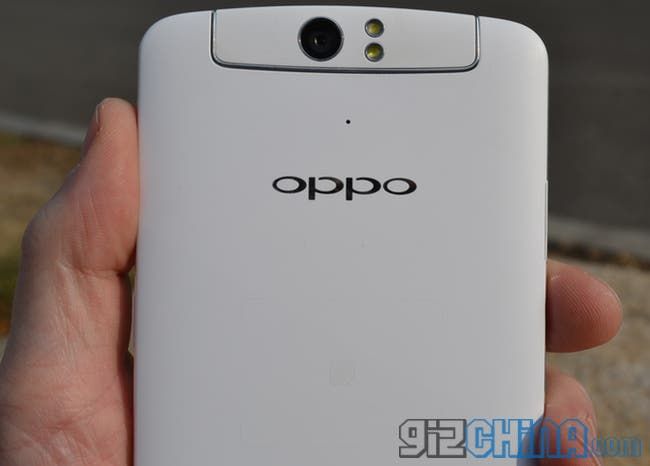
I honestly thought the rotating camera would be a gimmick and I wouldn’t use it, but it is by far the best feature of any phone I have used. I can capture photos in ways which are not physically or technically possible on other devices, and I find myself thinking of new ways to make use of the slow shutter feature and O-click remote to be more creative! To me this is a great sign of well designed and thought out technology!
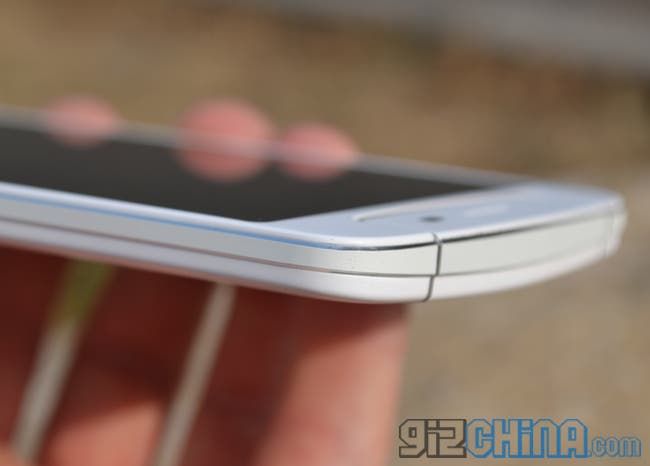
The Oppo N1 does have it’s compromises though. The large battery and amazing battery life means the phone is massive, bigger than most 6-inch devices. The processor is ‘only’ a Snapdragon 600 where phones of a similar price have an 800 (although in use you won’t tell the difference),and a camera centric device it is a shame there is no SD card expansion slot but I think many of us have come to expect this from high-end premium devices.
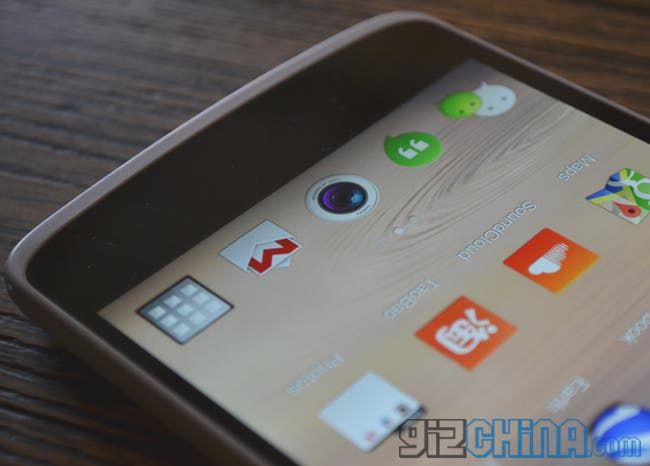
I have used the N1 for a month now and have throughly enjoyed it and have not regretted buying it! I do find it is too large in some situations and sometimes feel more confident going back to my much smaller Xiaomi Mi2, but when going somewhere speical, spending time with family or covering media events, like this past Monday's OnePlus/CyanogenMod event, the Oppo N1 is my go to device.
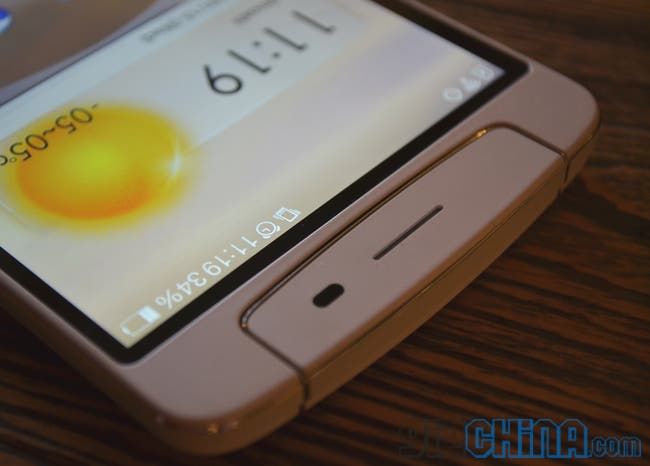
The Oppo N1 right at the top of my list of phones to suggest at the moment. It is beautifully designed and manufactured, boasts excellent hardware, screen, and battery life, has the versatility developers and hackers enjoy and has the most fantastic camera of any smartphone on the market today! Overall it is a fantastic phone!
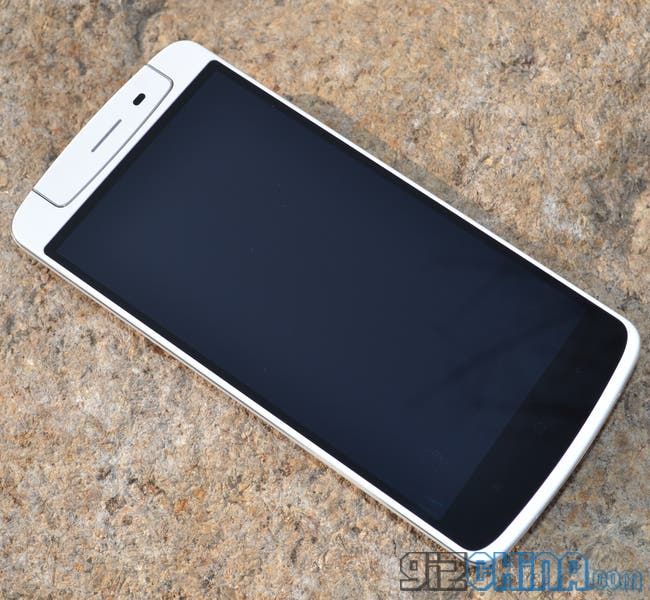
Thanks to Oppo for helping me out with the review phone!
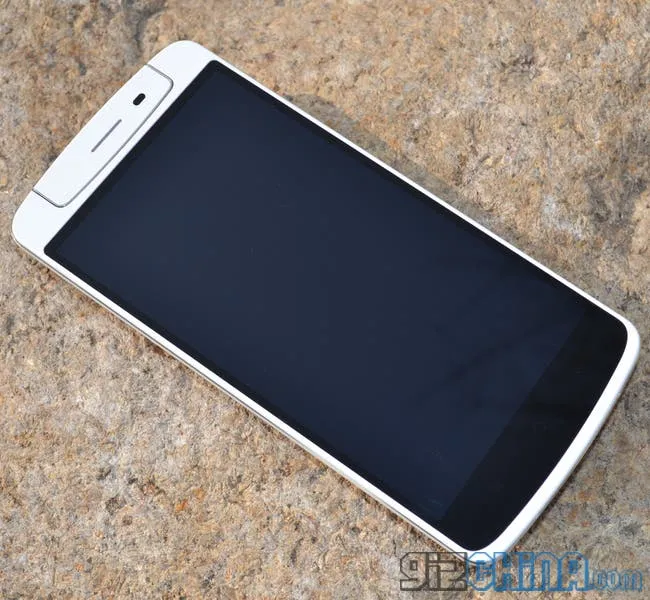


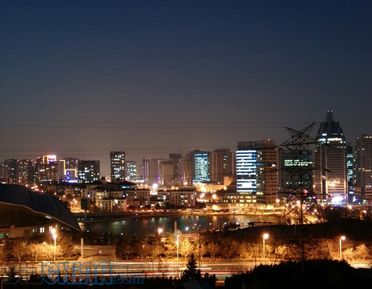
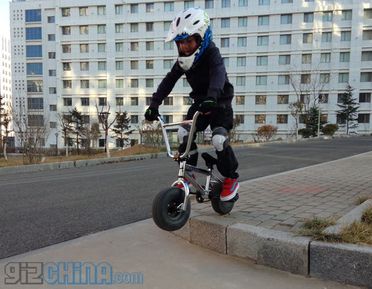
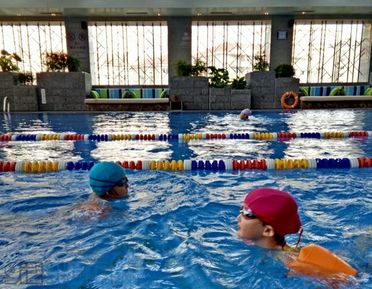


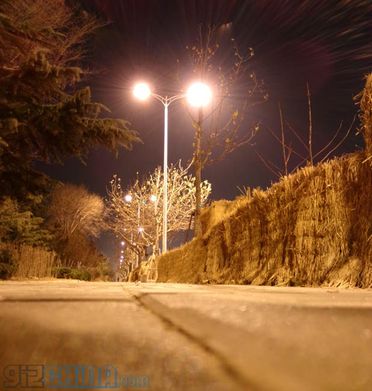

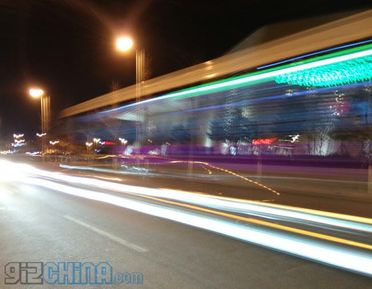




Place comments
0 Comments
You are currently seeing only the comments you are notified about, if you want to see all comments from this post, click the button below.
Show all comments